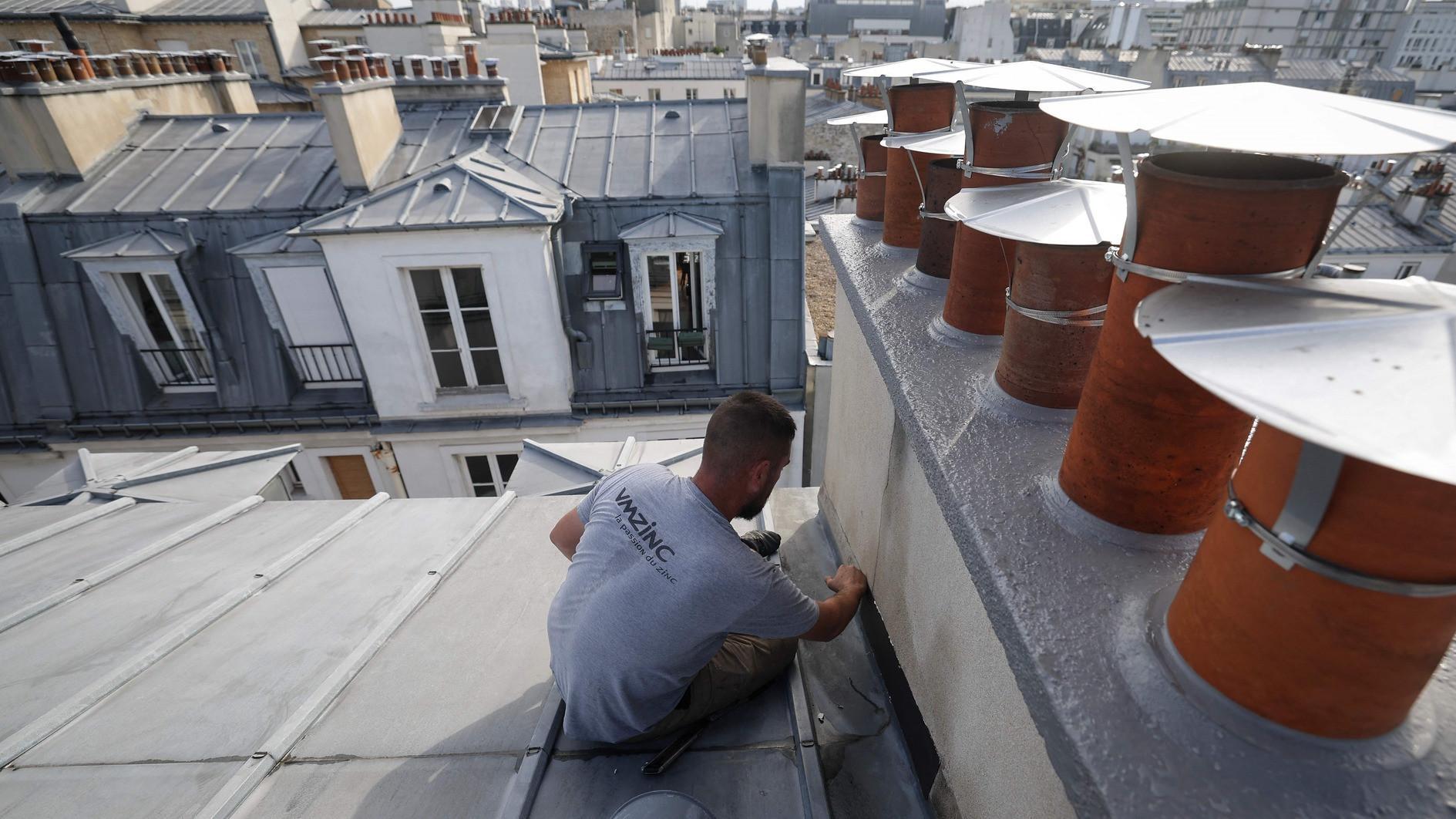
The zinc covering the roofs of central Paris has given the French capital's skyline its distinctive grey hue for almost two centuries.
Now the roofs and the workers who create and care for them are aiming to enter a select heritage club to showcase a profession adapting to the challenges of climate change.
The French culture ministry has chosen the zinc roofers as the country's entry for the UNESCO list of Intangible Cultural Heritage to be decided at the U.N. body's session in Paraguayan capital Asuncion in December.
The craftsmanship of roofers and other ornamentalists who have sculpted the capital's skyline will be among 67 candidacies vying to join other iconic heritage sites.
According to the city's urbanism agency Apur, Paris has 128,000 roofs covering a surface area of 32 million square meters, of which 21.4 million are of the traditional zinc-covered variety.
"Paris seen from above, it's obvious you're not in another city," said an enthused Delphine Burkli, mayor of the capital's ninth district.
Burkli helped initiate the French bid and first proposed in 2014 to add the roofs to UNESCO's heritage list.
But the plan has since changed as it is "very complicated," said Gilles Mermet, coordinator of the bid.
The campaign to etch the roofs into the prestigious books of world heritage stumbled when Paris town hall withdrew its support.
Mermet said it was "afraid" of "no longer being able to build in Paris without the agreement of UNESCO."
"In the end, it was more interesting to showcase the profession itself" — which struggles to recruit — more than the roofs as such, to protect the beauty of the urban landscape, he added.
The zinc the covers almost 80 percent of Parisian roofs has come under criticism for its role in overheating buildings.
An Apur study in 2022 found that 42 percent of roofs in Paris had a weak reflection capacity, meaning they absorbed more heat.
Roofscapes, a French start-up launched at the Massachusetts Institute of Technology, put zinc under the spotlight in a test during the summer of 2023.
The experiment used an eight-storey building covered in zinc with a technical void in the attic that acted as a thermic buffer zone.
The study showed that a zinc roof heated the surrounding air during the day, up to 10 degrees Celsius above the home's temperature and 7C warmer than the day's weather.
But Mermet is adamant that the zinc itself is not the problem, rather the absence of insulation in old buildings.
Training schools now teach budding roofers to pose the insulation, and the old zinc is recycled, he said.
Mermet, though, was unimpressed. Such an idea has "no interest" for him because "it will increase the price of restoring the roofs."
"With the rain, your paint will end up burning and going to the sea."